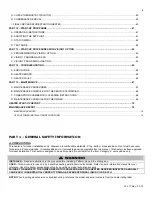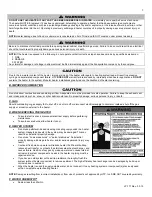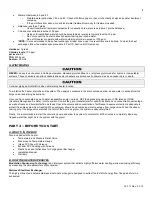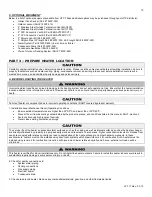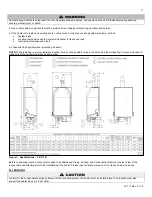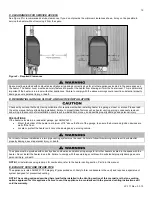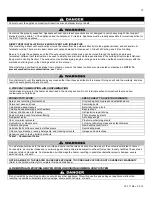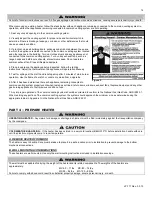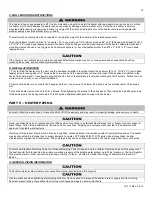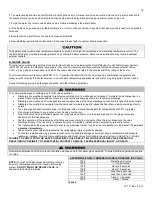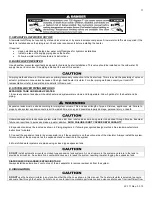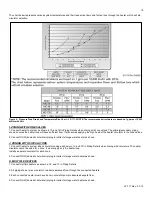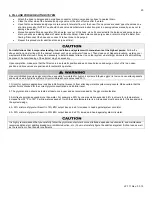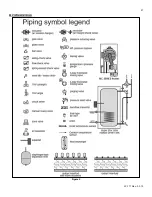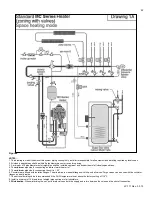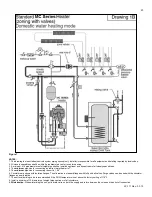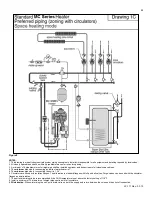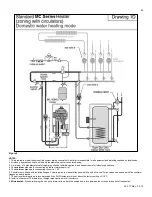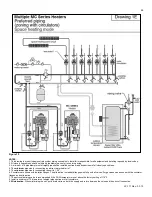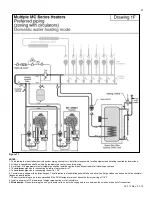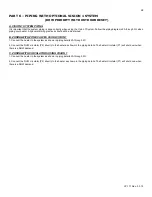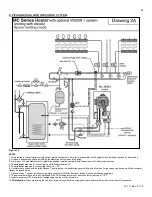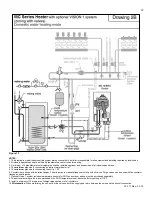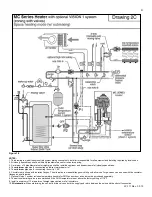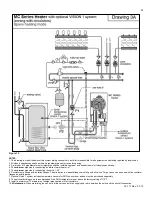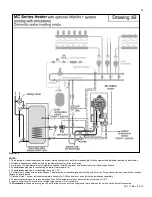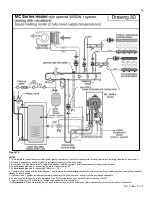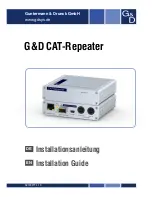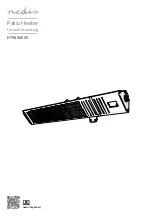
20
LP-171 Rev. 3.3.15
L. FILL AND PURGE HEATING SYSTEM
Attach the hose to balance and purge hose connector or drain valve and run hose to nearest drain.
Close the other side of the balance and purge valve or the shut off valve after the drain.
Open first zone balance and purge or drain valve to let water flow out the hose. If zone valves are used, open the valves one
at a time manually. (NOTE
: You should check valve manufacturer’s instruction prior to opening valves manually, so as not to
damage the valve.)
Manually operate fill valve regulator. When water runs out of the hose, while it’s connected to the balance and purge valve or
drain you will see a steady stream of water (without bubbles). Close balance and purge valve or drain to stop the water from
flowing. Disconnect the hose and connect it to next zone to be purged.
Repeat this procedure for additional zones (one at time).
For installations that incorporate standing iron radiation and systems with manual vents at the highest points:
Follow the
above section and, starting with the nearest manual vent, open until water flows out. Then close vent. Repeat procedure, working your
way toward furthest air vent. It may be necessary to install a basket strainer in an older system where larger amounts of sediment may
be present. Annual cleaning of the strainer may be necessary.
Upon completion, make sure that the fill valve is in automatic position and each zone balance and purge or shut off is in an open
position and zone valves are positioned for automatic operation.
Use only inhibited propylene glycol solutions, specially formulated for hydronic systems. Ethylene glycol is toxic and can attack gaskets
and seals used in hydronic systems. Glycol mixtures should not exceed 50%.
1. Glycol for hydronic applications includes inhibitors that prevent it from attacking metallic system components. Make certain that the
system fluid is checked for the correct glycol concentration and inhibitor level.
2. The glycol solution should be tested at least once a year and as recommended by the glycol manufacturer.
3. Anti-freeze solutions expand more than water. For example a 50% by volume solution expands 4.8% in volume for a temperature
increase from 32° F to 180° F, while water expands 3% with the same temperature rise. Allowances must be made for this expansion in
the system design.
4. A 30% mixture of glycol will result in 15% BTU output loss and a 5% increase in head against system circulator.
5. A 50% mixture of glycol will result in 30% BTU output loss and a 50% increase in head against system circulator.
It is highly recommended that you c
arefully follow the glycol manufacturer’s concentrations, expansion requirements, and maintenance
recommendations (pH additive breakdown, inhibitor reduction, etc.) You must carefully figure the additional system friction loss, as well
as the reduction in heat transfer coefficients.
Summary of Contents for MC120
Page 21: ...21 LP 171 Rev 3 3 15 M PIPING DETAILS Figure 5 ...
Page 53: ...53 LP 171 Rev 3 3 15 Figure 30 ...
Page 71: ...71 LP 171 Rev 3 3 15 Figure 34 ...
Page 72: ...72 LP 171 Rev 3 3 15 Figure 35 ...
Page 73: ...73 LP 171 Rev 3 3 15 Figure 36 ...
Page 76: ...76 LP 171 Rev 3 3 15 ...
Page 77: ...77 LP 171 Rev 3 3 15 ...

